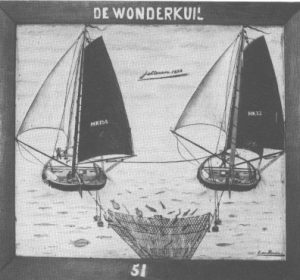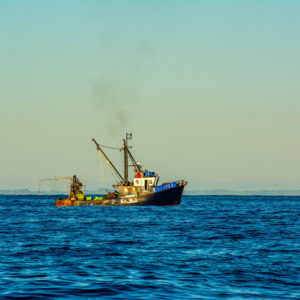Bottom trawling is an indiscriminate method of fishing which has been around for hundreds of years, more or less unchanged. For centuries people worldwide have scoured the sensitive ecosystems from the bottom of the seas. What were once beautiful environments, are now little more than barren wastelands.
New Zealand is lucky in that our country was settled more recently than many of these areas, meaning our waters and seabed communities have suffered this punishment for a much shorter period. Possibly why in some quarters we are seen as a success story. But at the rate we are going it’s possible we could be catching up, in terms of seabed damage, faster than we thought. This is a concern for all New Zealanders.
The environment is there to sustain not only us but complex ecosystems now and in the future. That’s why LegaSea promotes shifting industrial fishing including trawling offshore, past the 100m depth contour.

Royal petition to ban trawling
As far back as 1376 there are documented records of the destructive nature of trawling. This came in the form of a petition to King Edward III and the British government about the use of an early form of a beam trawl, the wondyrchoum (known in Dutch as a wonderkuil). The wondyrchoum was said to be a six meters long, three-meter-wide net, held to the bottom with rocks and open at the top by being nailed to a long beam with a frame at either side. Sound familiar??

The petitioners alleged that the Wondyrchoum ran over the sea floor destroying all life on the bottom, including all the plant life and spat that was required for all other manners of sea life to feed upon. It was also said that the fishermen took more small fish that they had use for, which they ended up feeding to their “fat pigs”. All the people of the realm were said to be suffering from the use of this trawl.
Upon receiving this petition, the use of this method was outlawed around Britain and remained that way for centuries, although it was still carried out in secret. It was made illegal all over Europe and even made a capital offence in some areas. Two fishermen were executed in England in 1584 for having metal chains attached to the bottom of their nets (similar to that used now on most bottom trawlers).
It wasn’t until the 1800’s with the invention of the engine and the overturn of many Acts, that trawling became so widely ‘successful’. Though there was still much opposition to the practice.
As far back as 600 years ago, the decision-makers recognised the destructive power of bottom trawling. It is hard to fathom why our decision-makers allow industrial-scale trawling in inshore waters to be one of the main ways fish are caught today.
All that time ago they prioritised the health of the environment over the fattening of the pigs, maybe it is about time we did the same.





